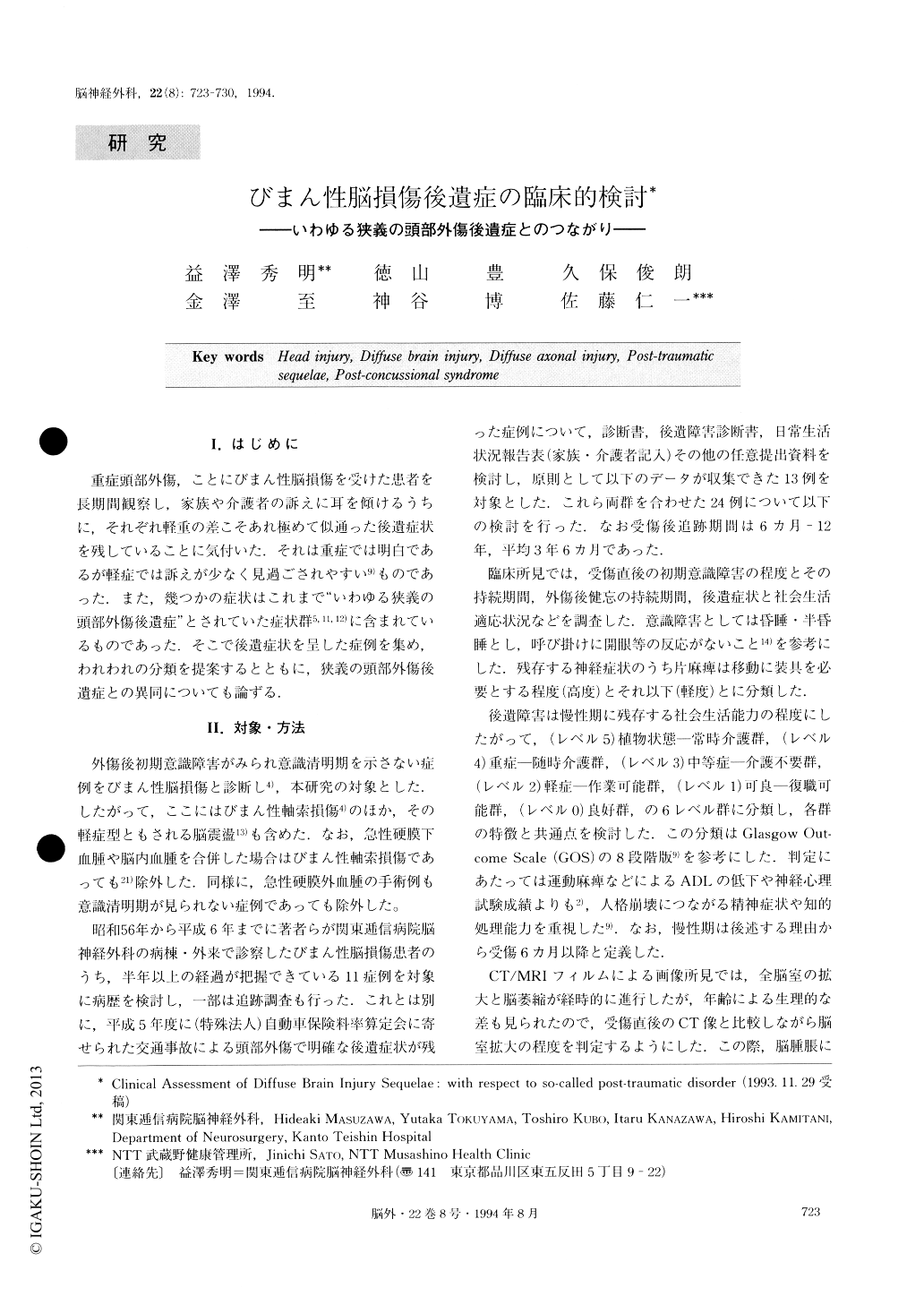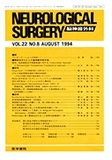Japanese
English
- 有料閲覧
- Abstract 文献概要
- 1ページ目 Look Inside
I.はじめに
重症頭部外傷ことにびまん性脳損傷を受けた患者を長期間観察し,家族や介護者の訴えに耳を傾けるうちに,それぞれ軽重の差こそあれ極めて似通った後遺症状を残していることに気付いた.それは重症では明白であるが軽症では訴えが少なく見過ごされやすい9)ものであった.また,幾つかの症状はこれまで“いわゆる狭義の頭部外傷後遺症”とされていた症状群5,11,12)に含まれているものであった.そこで後遺症状を呈した症例を集め,われわれの分類を提案するとともに,狭義の頭部外傷後遺症との異同についても論ずる.
Brain injury sequelae were observed in 24 patients who had sustained diffuse brain injury. According to their ability to lead social life, the severity was classi-fied into 6 levels; vegetative, severe, moderate, mild, fair, and good. The severity levels statistically corre-lated with the length of the initial unconsciousness (Spearman's correlation coefficient r=0.929, n=24, p< 0.01), with posttraumatic amnesia (r=0.827, n=8, p< 0.05), with ventricular enlargement (r=0.808, n=24, p <0.01) and with the presence of hemiplegia (r=0.740, n=24, p<0.01). Children and young adults showed a tendency to improve to milder levels. Mild head injury patients who sustained concussion of less than 6 hours in duration also showed minimal sequelae such as mild ventricular dilatation and difficulty in recent memory.This memory impairment had often been ascribed to the so-called postconcussional syndrome. The threshold for occurrence of diffuse brain injury sequelae was esti-mated as concussion lasting 15-30 minutes or post-traumatic amnesia of a few days in duration in adults and about a week in children. Superficially localized brain contusion was frequently observed and was not correlated with the severity level, hemiplegia or post-concussional syndrome.

Copyright © 1994, Igaku-Shoin Ltd. All rights reserved.


